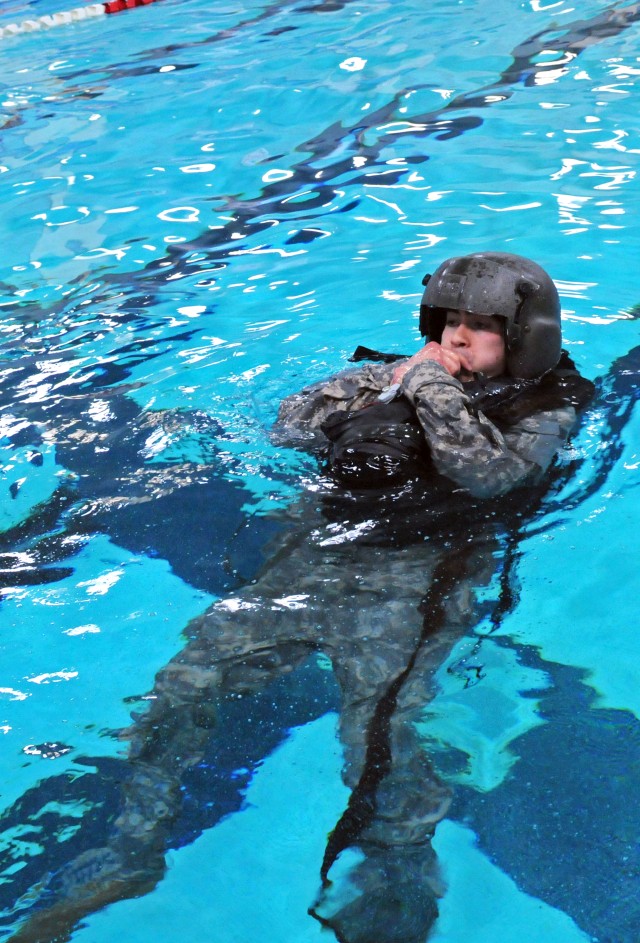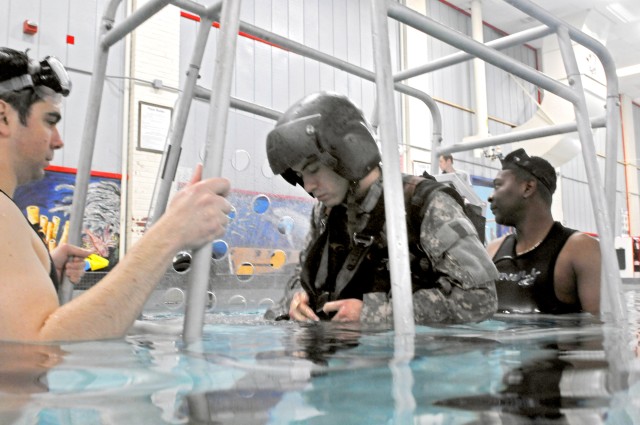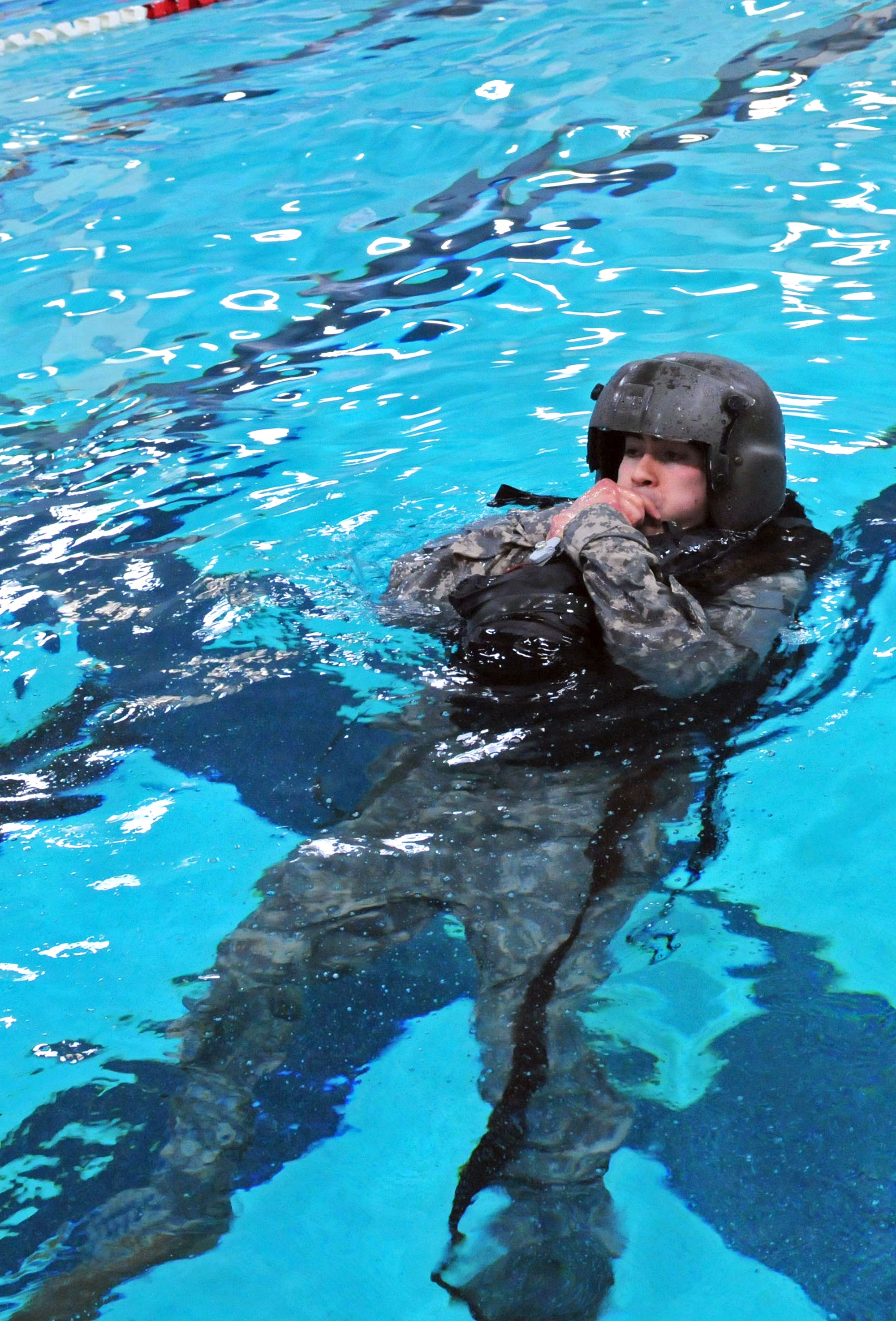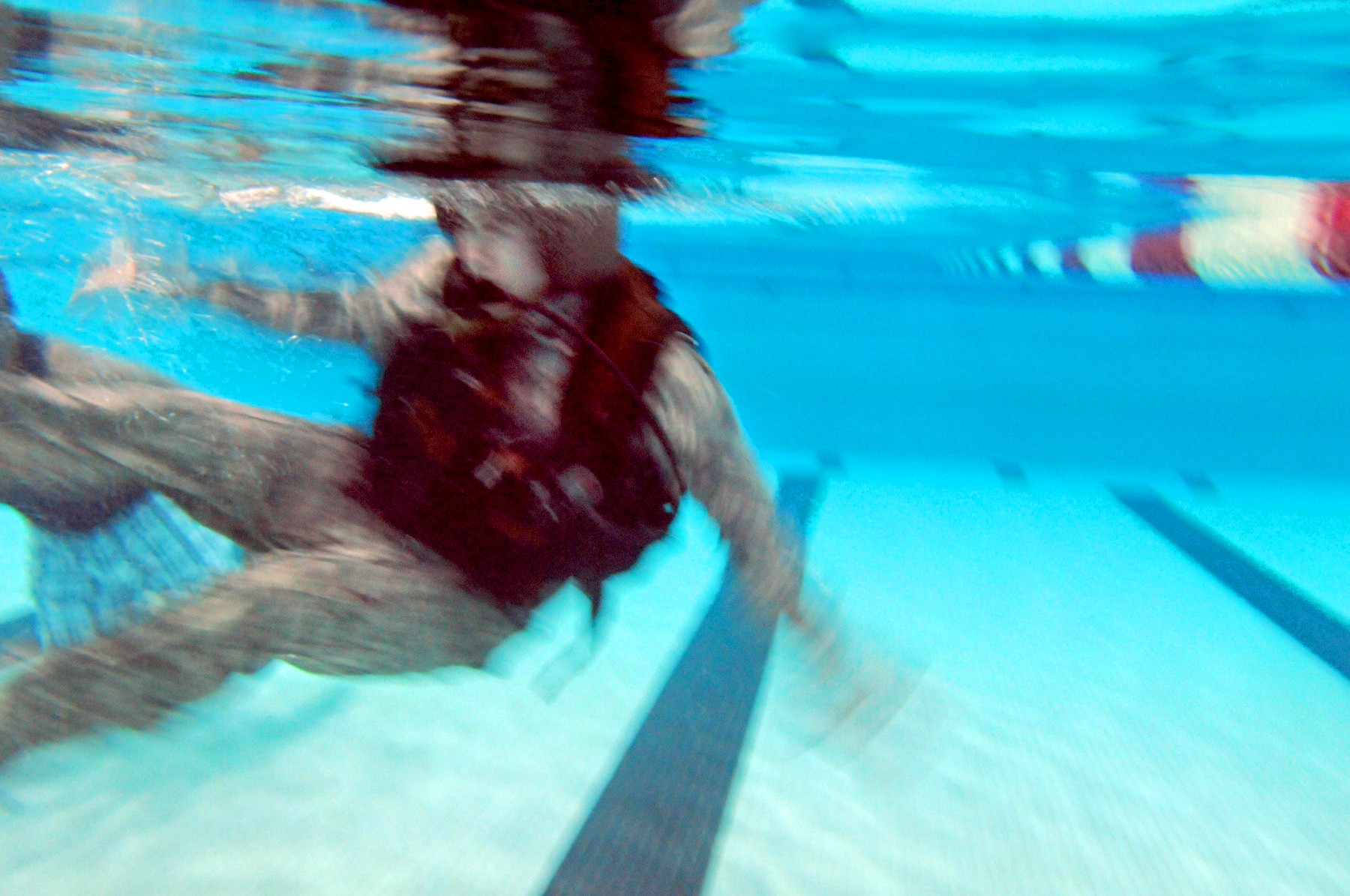The fear of drowning affects many people, but the Soldiers of the 4th Battalion, 160th Special Operations Aviation Regiment overcome that fear by training in pools at Joint Base Lewis-McChord to prepare for the remote chance of water ditching.
The intensity of the aviation water survival test showed on the face of Spc. David Pliego, UH-60 Blackhawk crew chief, 4th Bn., 160th SOAR, as he struggled to swim 30 meters in his flight gear and treaded water for what seemed like hours - only to be told his challenge wasn't over. It had only just begun.
"It's pretty difficult training," Pliego said. "It's not something you do every day, and the uniform and flight gear does hinder your movement a lot. It's definitely something you've got to struggle through."
The weekly training consists of three phases: the swim stage, which ensures Soldiers can swim in their gear; the floatation stage, which tests the aviators' ability to deploy a low-profile floatation device; and the final challenge, the exit stage, in which crew members learn to escape an aircraft that has crash landed in water.
"As a flight crew member, you have to be ready for anything," Pliego said.
As Pliego strapped into the chair of the Shallow Water Egress Trainer, instructor and rescue swimmer, Spc. Adam Kesmetis, 4th Bn., 160th SOAR, gave him last minute instructions. Kesmetis called "ditching, ditching, ditching" and Pliego's world turned upside-down.
Pliego had only seconds after the movement stopped and the water cleared to orient himself, undo his harness, find an exit, swim free of the simulated aircraft and surface before he ran out of oxygen. That was his first ride and it only got harder from there.
During the next two rides, Pliego used his emergency air supply to free himself from a seat belt malfunction and a blocked exit.
"The first time you do it, it's pretty scary because you're trying to remember everything you've learned," Pliego said. "Staying calm is really the key."
The SWET chair is an annual training requirement. As with any training, aviators got better through repetition, allowing them to practice acquiring and maintaining reference points in a downed aircraft to find an exit.
"I've had pilots who have been in situations (with a downed aircraft in water) who tell me the training just comes back to you because of the muscle memory," said Staff Sgt. Jared Wood, Aviation Life Support Equipment NCOIC, 4th Bn., 160th SOAR.
The training allowed aviators to recall life-saving techniques and stay calm in otherwise chaotic situations.
"For that one-in-a-million chance (of a water ditching), this training is your one chance for survival so any chance you get to train for it is beneficial to you," Pliego said. "Knowing and being able to use the techniques taught here has saved lives."






Social Sharing